Potted Singapore 2

Beez Neez now Chy Whella
Big Bear and Pepe Millard
Sun 6 Nov 2016 23:07
|
Potted Singapore 2 – Old and
Modern, Then and Now
  1952.
Classrooms in the early days were cramped and desks meant for two had to
accommodate up to three pupils.
2011.
Singapore is an Education and Professional Development hub with sophisticated
teaching facilities and the drive towards inspiring students to
learn.
  1954.
The Samsui women are a group of Chinese immigrants who came to Singapore to find
work. They have taken a vow of celibacy and are employed in the labourious
construction industry
2010.
Women in Singapore continue to play an important role in the workforce, with
71.7% of women in the prime-working ages of 25-54 working in 2010 (ministry of
Manpower Statistics November 2010).
 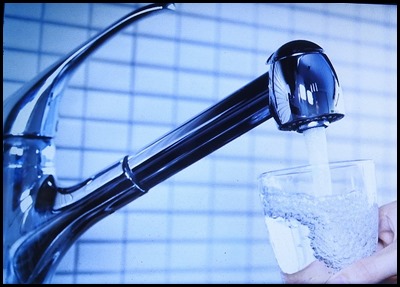 1959.
During the dry season, the former Rural Board supplies drinking water to rural
areas by water wagons.
2011.
Residents in SIngapore now have access to clean tap water that is safe to
drink.
  1962.
Shopping for foodstuffs at a street market in the 1960’s involves loud
bargaining and hawkers shouting above each other to attract
customers.
2011.
The supermarket offers an orderly and neat shopping experience with prices
properly labelled to help consumers reach a buying decision
quickly.
  1964.
The sporting spirit is planted in the youth with sports day and athletic
competitions in schools.
2011.
Marathons and public sporting events are frequently organised to encourage an
active lifestyle.
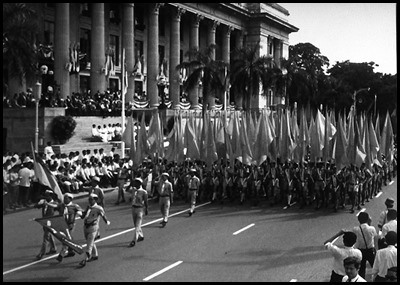  1966.
Contingent from Singapore Scout Association marching past City Hall at National
Day Parade.
2009.
Singapore celebrates its
independence on the 9th of August with a spectacular National Day
fireworks display.
  1970. A group of Chinese Hawkers
selling food in unsanitary and makeshift street-side stalls.
2011. The modern foodcourt offers a
multi-ethnic spread of local hawker favourites in a clean, comfortable
environment.
  1944. Rows of low-rise kampong houses
lined the rustic roads of Katong created one of the many early residential
communities.
2011. Within five decades,
Singaporeans are successfully housed in high-rise flats in satellite towns and
estates with comprehensive facilities.
 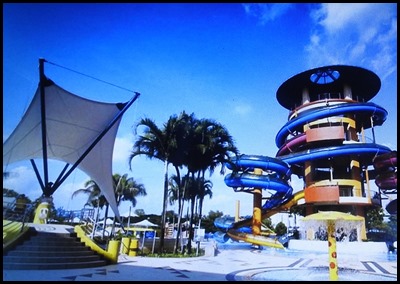 1971. Children splashing around in muddy
flood pools. Frequent floodings led to unhygienic living conditions in
villages.
2011. Having fun and a good time is
made easy with safe water parks and playgrounds such as those found at the
Jurong East Swimming Complex.
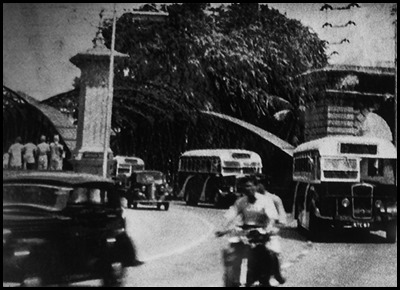  1951. Getting around by public
transport in the early days depended on an array of buses, trams, trishaws and
taxis.
2011. The Singapore Rapid Mass
Transit system provides convenient access to various parts of the country with a
well-connected network.
  1969. The rollercoaster at the
Wonderland Amusement Park in Kallang Park was the source of thrills and
excitement for the whole family.
2011. A masterpiece of urban
architecture and engineering, Singapore Flyer is a must-visit, being a
compelling, visitor destination from which one can enjoy the cityscape of
Singapore and beyond.
  1928.
The Fullerton Building along the Singapore River was a hub for business
merchants in the 1920’s when it served as the General Post
Office.
2011.
The conserved Fullerton Building has been converted into the world-class, five
star Fullerton Hotel.
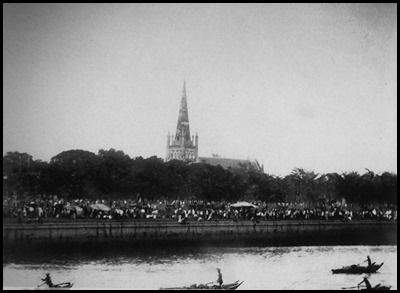  1900.
New Year’s day event held at the Esplanade while St Andrew’s Cathedral cuts a
distinctive figure in the background.
2009.
Dazzling fireworks light up the sky over Marina Bay and the Esplanade during a
New Year’s Eve countdown party.
ALL IN ALL GRATEFUL THANKS TO
THE SINGAPORE FLYER FOR THE PHOTOGRAPHS AND COMMENTARY
A GREAT INSIGHT INTO THE PAST
|